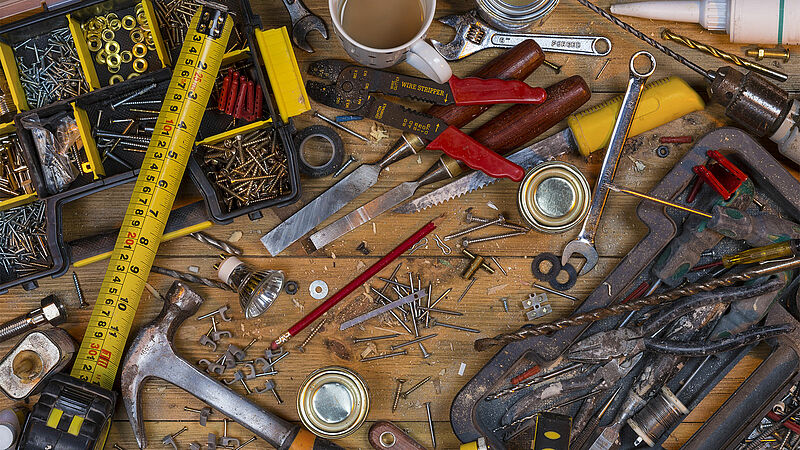What is 5S and how can it improve workshop efficiency?

Implementing 5S in the workplace
The 5S system is an unvarying process that creates an organised, sanitary, safe, and efficient workplace when properly applied. Five steps actualise the procedures that need to be implemented if a craftsperson or workshop is to properly make use of lean management. Non-stop development is the name of the game here if professionals observe the following steps.

1. Sort
For 5S in the workplace to be effective, it’s necessary to sort through all the typical materials needed for day to day use. Only the essential items useful for completing tasks are required. This means that a workshop should focus on removing unimportant items and discover which ones can leave the work area and what tools and equipment must stay. When distractions are gone, productivity can increase.

2. Straighten
For this step, items must be organised to ensure that everything has a designated place and that the items stay this way. If all employees know where every tool is located, then there’s no need to waste time by asking one another. Tools and other items should be placed in ergonomic spots, meaning that there’s less chance of needing to bend low or reach for a high shelf and risk an accident.

3. Shine
Lean management is greatly enhanced when the workshop is kept clean and tidy at all times. This should ideally be done at the end of the day so that the working hours can be focused solely on completing tasks for customers. Workshops can get messy very quickly, especially for carpenters and metal workers, so routine dusting, vacuuming, and mopping the floors, tools and machinery should be done every day.

4. Standardise
In order to implement lean management successfully, a workshop needs to stick to a set of standards that will streamline task execution and the company’s overall workflow. This section is about making rules and practices for Sort, Straighten, and Shine. These standards could, for example, come in the form of schedules or charts placed around the workshop wall for everyone to see.

5. Sustain
Sustaining a new practice like lean management in the long-term requires a lot of maintenance and willingness to update or improve existing processes where necessary. Conscientious management techniques and employee discipline are crucial to ensuring that the workshop flourishes over time.

Using lean management to arrange an efficient toolbox
Any craftsperson needs an organised toolbox as well as workshop, and it’s simple to use the same 5S methods to ensure tools and equipment are always where they should be. This makes finding the necessary tools as quick and easy as possible.
- Only keep the most frequently used tools in the toolbox. The heavy duty tools should be placed on a peg board or in drawers (with labels) in a workshop.
- It’s best to place nuts, bolts, washers, and other small items in plastic dividing trays.
- Clear away broken tools or equipment that’s no longer needed. This only wastes valuable space.
- To see everything you have, place a tarp or large piece of cardboard outside to properly lay out everything from the toolbox.
- Always group things together: screwdrivers, wrenches, nuts and bolts, and so on. Get into the habit of placing things back into the same spot.
- Set aside a separate section for your specialised markers. edding’s range includes the retract 11 permanent marker (for use with one hand), the 500 permanent marker (for labelling boxes, drawers, and other everyday tasks), and the 750 paint marker (best for heavy duty tasks for craftspeople and tradespeople working with glass, metal, and wood). If the material is rough or rusty, particularly with metal, stone, or wood, the edding 950 industry painter is good to keep in mind.
More interesting topics to read about

edding 8407 cable marker
Perfect for electricians or IT departments, the 8407 cable marker is able to write on thin cables with its 0.3mm nib. Coming in a range of four different colours, the quick-drying and permanent ink is ideal for identifying exactly which cable is which and is essential for any toolbox.

edding 8850 carpenter pen
For any carpenters or craftspeople doing a lot of drilling, a precise marker with an extra-long nib is often essential to get the job done correctly. The edding 8850 carpenter pen is highly adept at marking hard to reach places, and works best on a dust-free and dry surface.
